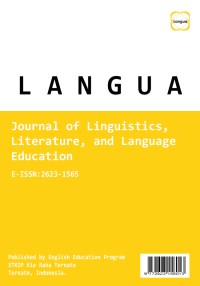A Phytonymic phraseology and linguocultural features of paremiological units
Abstract
The article comparatively examines phytonomic phraseology, forming a branch of onomastic phraseology of English and Azerbaijani languages. Internal classification of onomastic phraseology is provided for this purpose and the criteria for designation of phytonymic phraseology are determined. Such a system of markers embraces lexical units that are more or less connected with the plant world, as well as words denoting the species of plants. Phytonymic phraseologies were selected from relevant lexicographic sources and grouped on the basis of materials of Azerbaijani and English languages. The research shows that phytonymic phraseology forms an independent group in the onomastic phraseology of each language. The characteristics of the development of phytonomic phraseology by species and type names were studied and high frequency of some species’ names in phytonomic phraseology was found out.
The article also addresses the issues over adequacy and equivalence of phytonomic phraseology of diferent-system languages. The study in this area indicates considerable role of phytonomic phraseology in the verbalization of national-cultural indicators. Direct connection of ethnocultural marker and the code with the onym used in the composition was clarified in phytonomic phraseology.
Downloads
References
2. O.I. Vasilenko, Otphitonymic semantic derivation as a reflection of the estimated potential of phytonyms
O.I. Vasilenko // Postgraduate notebooks: Izvestiya RSPU named after A. I. Herzen. 2008. No. 26 (60). p. 62–65.
3. N.I. Konovalova, People's phytoonymy as a fragment of the linguistic picture of the world
N.I. Konovalova, Ekaterinburg: House of Teachers, 2001 . p.150
4. L. M. Boyarkina, Anthropocentric aspects of studying English phytonimic vocabulary: lexeme rose
L. M. Boyarkina, I. I. Kashtanova // Humanities and education: scientific methodical journal- 2016. No. 2. p. 133–135.
5. G. Mahmudova, Phraseology of Turkic languages. Baku, Nurlan, 2009, p.296
6. A. Hajiyeva, Structural-semantic features of somatic phraseologisms in English and Azerbaijani languages. Baku, Nurlan, 2004, p.192
7. M. Mirzaliyeva, Phraseology of Turkish languages. 1st vol., Baku, Nurlan, 2009, p. 220
8. A. Gurbanov, Basics of Azerbaijan onomology. 1st vol., Baku: Nurlan, 2004, p.340
9. N. Seyidaliyev, Phraseology of the Azerbaijani epos and tale language. Baku, Araz, 2006, p. 326
10. E.S. Guliev, Phytonyms in Azerbaijani language. // Issues of historical-comparative lexicology of Turkic languages. Baku, “The world of books”, 2004, p.121-172
11. E.F. Arsentyeva, Phraseology and phraseography in a comparative aspect (on the material of Russian and English languages). - Kazan: Kazan State University, 2006. p.172
Copyright (c) 2021 Aysu Mirzayeva

This work is licensed under a Creative Commons Attribution 4.0 International License.
Authors who publish with Langua Journal of Linguistics, Literature, and Language Education agree to the following terms:
- Authors retain copyright and grant the journal right of first publication with the work simultaneously licensed under a Creative Commons Attribution License that allows others to share the work with an acknowledgement of the work's authorship and initial publication in Langua.
- Authors are able to enter into separate, additional contractual arrangements for the non-exclusive distribution of the journal's published version of the work (e.g., post it to an institutional repository or publish it in a book), with an acknowledgement of its initial publication in Langua.
- Authors are permitted and encouraged to post their work online (e.g., in institutional repositories or on their website) prior to and during the submission process, as it can lead to productive exchanges, as well as earlier and greater citation of published work.






